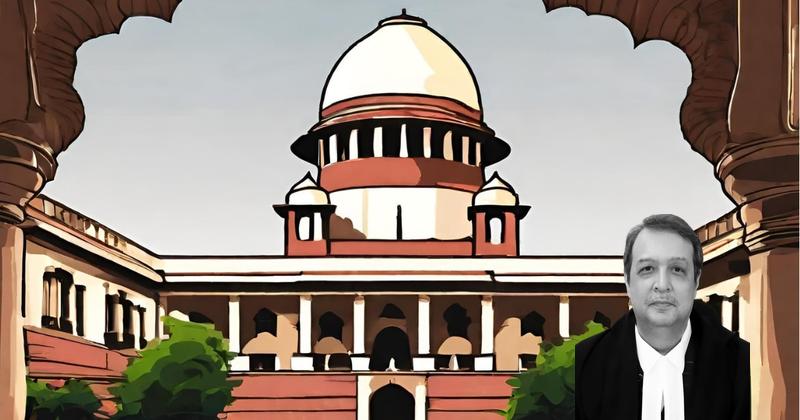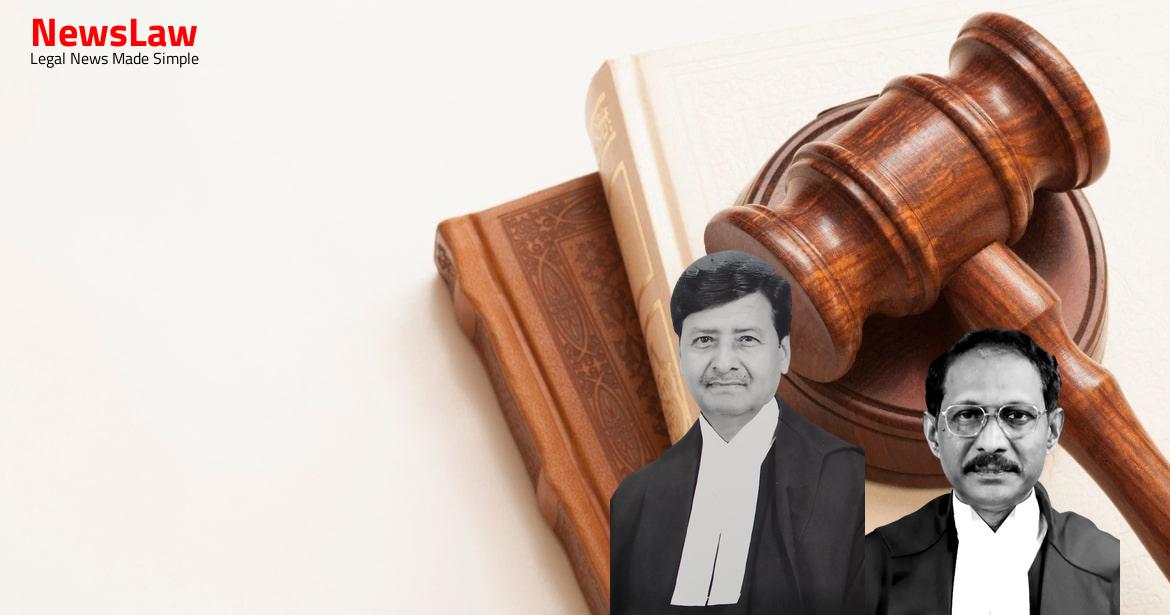Delve into the intricate legal analysis of a contentious land delineation dispute in our latest blog post. The case delves into the court’s examination of conflicting government department stands, highlighting the need for a balanced approach in dispute resolution. Stay tuned to understand the implications of the court’s legal analysis on the ongoing legal battle.
Facts
- The appellant-CWC became a statutory Corporation under the 1962 Act.
- The request of the appellant-CWC for delineation/denotification of the 34 acres of land in its possession from the SEZ area was rejected by the Ministry of C & I in 2017.
- The appellant-CWC filed a petition before the High Court challenging the rejection of the delineation/denotification request.
- An agreement dated 2 June 2004 was made between GAPL and the appellant-CWC for sub-leasing a plot of land for setting up a warehouse.
- Various attempts were made to settle issues amicably between the parties.
- The Division Bench of the High Court issued directions in June 2021 regarding SEZ compliance and acquisition of land for warehouse construction.
- A communication from APSEZL to the appellant-CWC regarding violations of the agreement was sent in January 2017.
- Further legal proceedings and representations were made by both parties in the case.
- The matter was listed for hearing multiple times before the Division Bench.
- The High Court directed the parties to make efforts for an amicable settlement through mediation.
- Details of lease agreements and possession agreements between parties were discussed.
- Points related to future business loss underwriting and vacating of premises were mentioned in the proceedings.
- The development rights under a Concession Agreement were granted to GAPL by GMB.
- The appellant-CWC continued its activities as per the terms of the agreement dated 2 June 2004.
- The Division Bench of the High Court granted an ad-interim relief to the appellant-CWC on 11 January 2017.
- The relief directed the respondents to allow the appellant-CWC to carry out storing and transportation activities of its commodities to and from the warehouse.
Also Read: Presumption of Genuine Endorsements in Cheque Case
Issue
- Modification made to the impugned judgment and order dated 30 June 2021 by an order dated 26 August 2021.
- The substitution of words ‘already identified and selected by CWC’ with ‘identified and proposed by the Respondent APSEZL and finally selected by CWC subject to the timeframe prescribed in the present Judgment.’
- The modification allows both parties to apply to the learned Single Judge for extension of time if necessary for compelling reasons.
- The learned Single Judge may grant further time based on the conduct of the applicant-party.
Also Read: Medical Negligence and Compensation: A Landmark Decision
Arguments
- Shri Divan submits that APSEZL agreed to provide an alternate site of the same size to CWC.
- Rule 18(2)(i) requires positive net foreign exchange earning for the proposal.
- The appellant-CWC’s request should have been considered by the Ministry of C&I.
- High Court erred in criticizing the appellant-CWC.
- APSEZL suppressed the fact that the possession of the land was with CWC.
- The appellant’s challenge to the notification dated 23 June 2006 was not positively responded to.
- APSEZL was required to issue a communication in 2017 due to contravention of the SEZ Act.
- Rule 7 of the SEZ Rules requires developer to furnish required particulars to the Central Government.
- Ministry of C&I’s rejection of the proposal for delineation/denotification is in doubt.
- Ministry of CAF&PD has supported the appellant-CWC.
- Certain areas have been delineated/denotified from SEZ areas at the request of APSEZL.
- APSEZL unilaterally resiled from the settlement conditions.
- High Court’s direction to abide by conditions was not balanced towards APSEZL.
- APSEZL proposed to utilize the warehousing facility for a minimum period of three years.
- Communication from Ministry of C&I in 2013 requires NOC from State Government for delineation/denotification proposals.
- Ministry of C&I’s hasty decision on the same day as the notice raises concerns about its conduct.
- Shri Divan 19 relies on the judgments of Krishnadevi Malchand Kamathia and Others v. Bombay Environmental Action Group and Others and Ratnagiri Nagar Parishad v. Gangaram Narayan Ambekar and Others.
- The appellant-CWC is estopped from arguing contrary to the notification dated 5 July 2004 as they did not challenge it.
Also Read: Remand of Writ Petition for Restoration and Decision on Merits
Analysis
- The second writ petition filed against the statutory authorities is legally tenable.
- The High Court compelled the appellant-CWC to accept the first two conditions but did not compel APSEZL to accept the third condition.
- The Division Bench held that the first two conditions were binding on the appellant-CWC, while the third condition was open for mutual settlement or mediation.
- The proposal of exchange of land was accepted by the Board of Directors (BoD).
- The High Court’s judgment highlighted the need for a balanced approach in cases involving statutory corporations and private companies.
- The Ministry of Commerce and Industry took a stand against the delisting request of CWC, while another Ministry of the Union of India supported it.
- The Central Vigilance Commission (CVC) raised concerns about the shifting of CWC’s warehouse and its implications.
- CWC requested delineation/denotification of its plots from the SEZ limits due to non-compliance issues.
- The Division Bench’s observations were criticized for not considering all three conditions of the settlement proposal.
- The conflicting stands of different ministries of the Union of India on the delineation/denotification issue were noted.
- The CWC’s objections to the proposed alternate land due to financial implications were highlighted.
- The Division Bench’s forceful approach towards the appellant-CWC in accepting the settlement was deemed unwarranted.
- The ongoing dispute between CWC and APSEZL regarding the land possession and construction was outlined.
- The need for a factual analysis of the case was emphasized over a purely legal approach in light of the pending writ petitions.
- The historical agreement between GAPL and CWC regarding the leased land in dispute was mentioned.
- The concept of ‘pre-relied-on’ evidence refers to the evidence which is relied upon by a party in support of its case.
- Pre-relied-on evidence is essential for a fair trial as it allows parties to present their case effectively.
- The admissibility of pre-relied-on evidence must be determined based on its relevance and probative value to the case.
- Pre-relied-on evidence cannot be introduced at a later stage of the trial without valid reasons.
- Parties should disclose pre-relied-on evidence to ensure transparency and fairness in the proceedings.
- Conflicting stands taken by different government departments should be resolved at the governmental level
- The Cabinet decision to extend the 2004 Industrial Policy for CST concession should be upheld
- Once a notification is issued by a specific department, other departments cannot take a different stand
- The State Government should have a unified policy and speak with one voice
Decision
- The appeals are allowed
- The judgment and order dated 30 June 2021 passed by the Division Bench of the High Court is quashed and set aside
- The cases are remitted back to the learned Single Judge of the High Court for consideration afresh, to be decided expeditiously preferably within six months
- No costs ordered
- The vacant possession should be handed over within one year after the initial three months period specified
- Any pending applications to be disposed of accordingly
Case Title: CENTRAL WAREHOUSING CORPORATION Vs. ADANI PORTS SPECIAL ECONOMIC ZONE LTD. (APSEZL) (2022 INSC 1082)
Case Number: C.A. No.-007277-007278 / 2022



